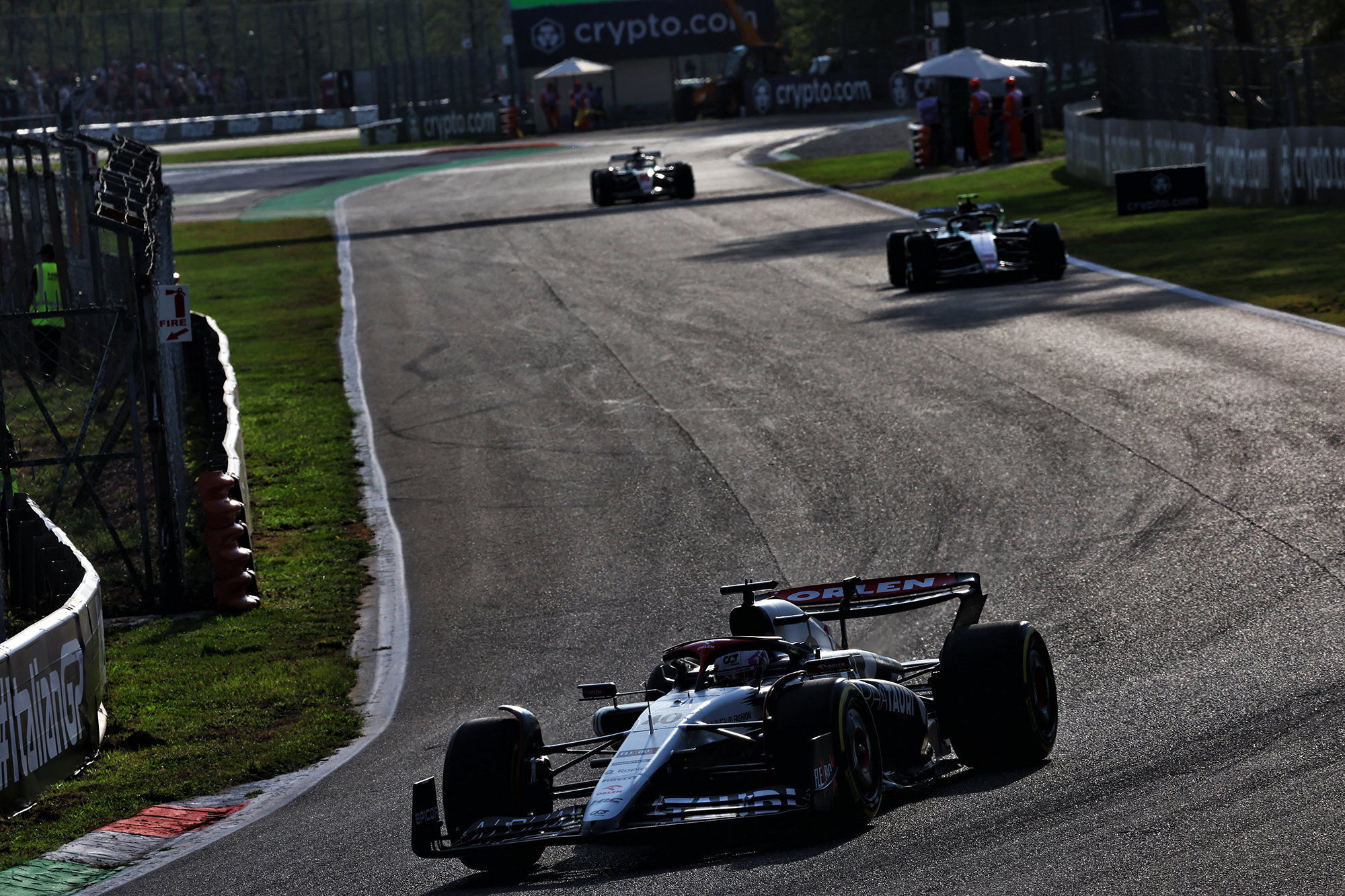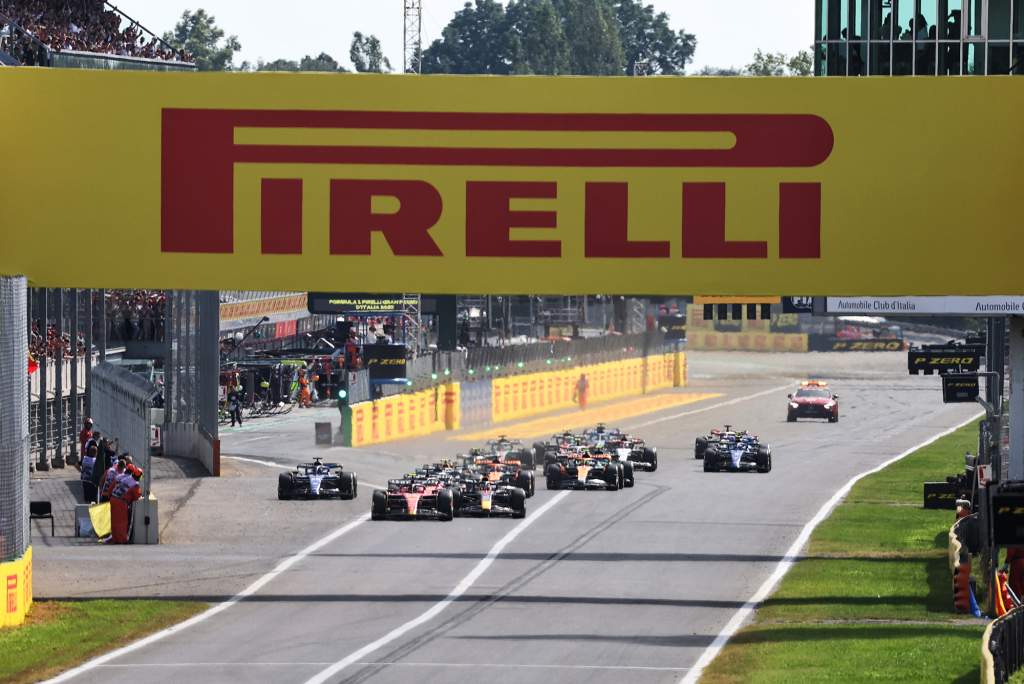Up Next

Flexible bodywork has been part of Formula 1 for a long time and will continue to be despite the FIA’s latest technical directive, which comes into effect at the Singapore Grand Prix this weekend.
The regulations sound simple enough. Article 3.2.2 demands that all aerodynamic components “must be rigidly secured and immobile” and “produce a uniform, solid, hard, continuous, impervious surface under all circumstances”. But the reality is you will never have a component that’s subjected to varying loads that’s completely rigid. Therefore, there must be at least some movement that is against the letter of the law.
The bib at the front of the underfloor underneath the driver’s feet/legs is one example of where it’s necessary to permit flexibility and it’s actually designed with a spring and a damper. That’s so that if you hit a kerb, there’s some movement there so you don’t transfer all of that load straight to the driver’s spine. This is an area that is not touched by the technical directive and it’s already policed by a load test.
What we’re really talking about here is the front wing, rear wing and the floor edges. All of these can have a big impact on car performance and flexibility, whether of the components themselves or how they are mounted on other parts. Load tests exist for all of these and the cars have all passed them so far, but that only goes so far.
Just from watching on television, it’s easy to see some designs that don’t live up to the degree of rigidity the FIA expects. They pass the load tests, but the technical directive is all about improving the way that the catch-all regulation Article 3.2.2 is applied to cut back on teams pushing this too far.
We often talk about the drag benefits of flexible bodywork, particularly the rear wing. If it rotates rearward as the load increases the load and drag will reduce. Ideally it’s the drag you want to reduce and if possible keep the load, but there’s more to it than that.
If we consider a typical F1 car using very rough, rounded-up numbers, you might set out your car specification to achieve a stable balance of something like 40% of the total load on the front axle and 60% of the total load on the rear axle.
The driver will then give you their car balance comments and if those comments complain of slow-speed understeer you might increase the front wing angle so in effect giving 41% front load – 59% rear load. This will probably reduce the understeer but make the rear of the car more nervous in the faster corners where it was previously well balanced.

If the comments are that the rear is nervous on the fast corners then you might reduce the front wing angle so end up with 39% front load – 61% rear load, making the car more stable in the fast corners but generating more understeer in the slow and medium speed corners.
So basically a stable aerodynamic load distribution through the speed range is a no-win situation.
To understand the problem and what you might just be able to do to rectify it here are some very simple numbers.
Let’s say the underfloor produces 60% of the overall downforce and the top-body aero the other 40%. If we split that 40% equally, it means the front and rear wing area are each responsible for 20% of that top-body downforce.
If you have a well-balanced car at that point, you might assume it will always be that way. The trouble is, downforce increases at the square of the speed. That means that if everything is working as planned the load on the tyres quadruples every time the car’s speed doubles.
The main problem is that these current F1 cars tend to understeer in low and medium-speed corners. What you are looking for is more front-end load in the slow and medium speed corners and less front-end load – or better still, more rear-end load in the faster corners.
With that in mind, ideally for these cars you would have the aero centre of pressure at something like 42%F – 58%R total aero load distribution in slow and medium speed corners and merging rearwards to 38%F – 62%R total aero load distribution for the faster corners.
To achieve that some teams are designing in a system that allows the front wing to reduce in angle as the load increases. That’s all fine, and it happens automatically because of the increasing speed and it can make the car feel better balanced, but to achieve that you are losing front downforce and with that overall downforce at higher speed – so even if the car feels better it’s fairly unlikely you will actually go faster. This is exactly what the FIA is trying to stamp out.
To complicate this even more, the underfloor also generates more downforce the closer it gets to the ground. This is also not linear and will increase by greater than the square of the speed the closer to the ground the edges of the floor get, meaning that this can have a big impact on the centre of pressure shift. If you get the centre of pressure shift from the underfloor correct, and can ensure that the load distribution moves rearwards as speed increases, then you can have a car that is balanced in slow, medium and high-speed corners.
However, to achieve that you might just have to give up a small amount of total load. To achieve peak underfloor numbers the tendency is to have the throat of the underfloor – this is the lowest section where the airflow is travelling at its fastest – further and further forward. The problem with that is that the underfloor downforce will migrate forward as the car gets closer to the ground, exactly the opposite to what you want.
Whatever you do with your car’s front and rear wings to try to control the aero centre of pressure shift, ultimately the floor produces 60% of the car’s total downforce so will have a much greater say in this equation – and will move the centre of pressure rearward the faster the car goes as the sides of the floor get closer to the ground.
On top of that the floor has an efficiency of something like 10-1 downforce to drag ratio and the rear wing 3.5-1 downforce to drag ratio, so having more of your rear downforce coming from the underfloor at higher speed allows you to run lower rear wing angles, making the overall car more efficient and so faster in a straight line.
And on top of all that, in slow corners you require more steering lock so you might even try to achieve a forward shift in front load with steering angle. If you can achieve this, then when the driver has some understeer and applies more steering lock the understeer will reduce – so by doing this the driver has another tool in their tool box to deploy as required.

If for any reason, and I suspect there are a few teams suffering from this problem, it all works the other way around to how you intend, you will have a very difficult and confusing car to drive – and it won’t take much to leave the driver scratching their head not knowing what they can do to overcome the problems.
It’s a complicated thing to balance up and it’s something that well-controlled flexible bodywork can help you with. That’s what the FIA is trying to keep under control with this technical directive, stressing that there is a catch-all rule and it’s not just about passing the load tests.
There are many different ways to achieve flexibility. There are various design mechanisms you can incorporate – carbonfibre structures that flex with certain loads, and (as the technical directive is targeting) places where the decoupling of components allows some freedom to flex. The FIA is also on the lookout for components that don’t flex uniformly, or that twist to get the desired effect.
However, there’s a very fine line between what is rigid enough and parts that are considered not to be. That’s where there could be some debate, especially given it’s so obvious with some cars that you can see the rotation of the wings as speed increases and front wing flaps rotating downwards relative to everything else.
Maybe we could even see a protest if one team is convinced another is pushing it too far, which is when you get the stewards involved and you have no idea what will happen.
The FIA has fired a warning shot over the teams’ bows in Singapore harbour and it’s possible that some teams will have to make some changes. Probably most will have to change something and it could have an effect on performance.
But I wouldn’t be surprised if it was much the same as last year with the porpoising technical directive that came in at Spa at the end of the summer break. Some rivals hoped it would hold back Red Bull but, if anything, it actually helped Red Bull stretch further clear.







